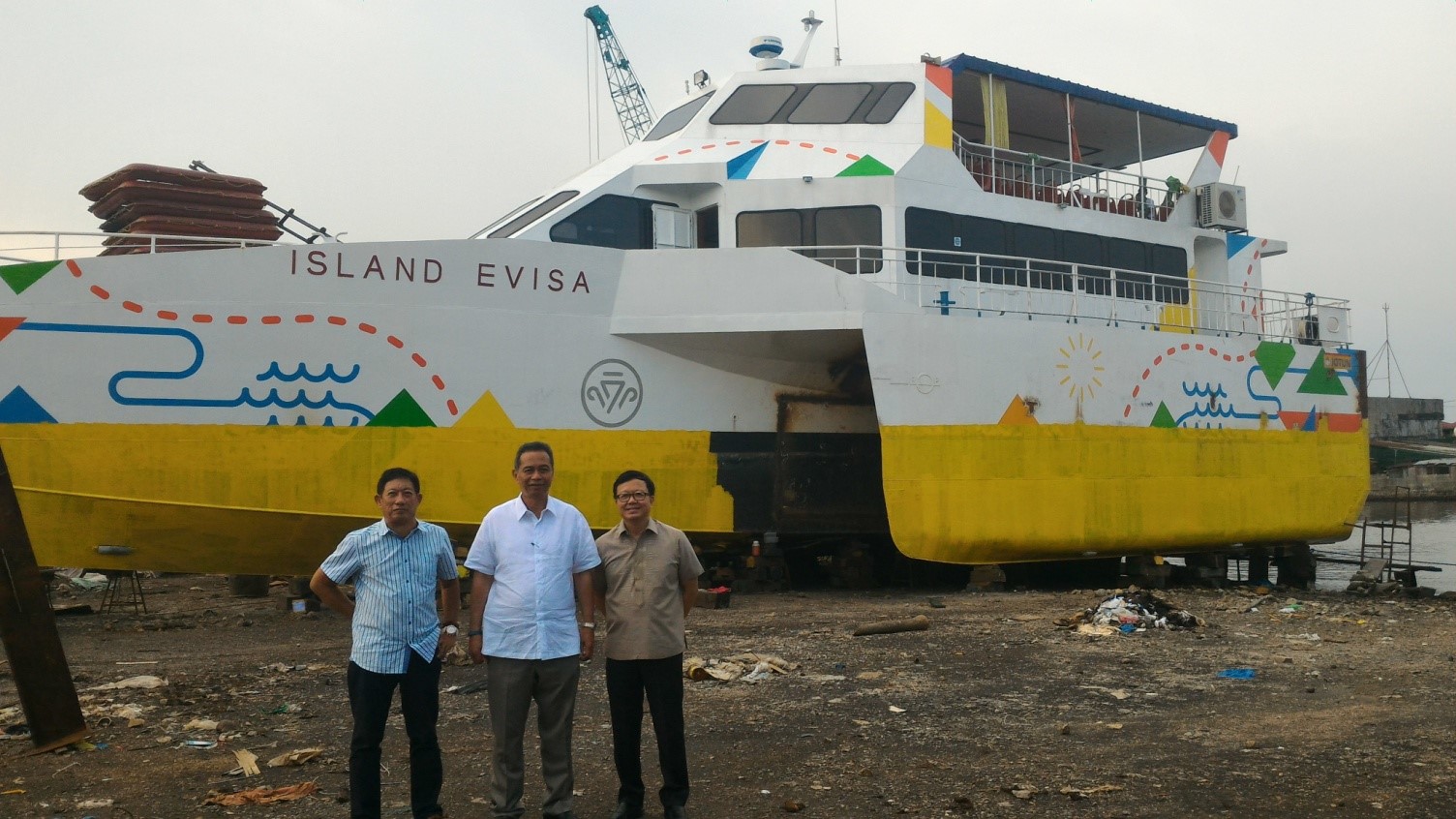
Once a mere vision, Island Evisa, the first steel hull trimaran yacht built by a domestic shipyard, is to set sail on its maiden voyage soon. ANGKLA Party-list Representative Cong. Jesulito Manalo (center) appears in this photo with Island Evisa’s naval architects Engr. Edward Cruz (left) and Engr. Sammuel Lim (right).
MANILA—On 17 August 2015, Senate approved on third and final reading Senate Bill (SB) 2482, otherwise termed as the Naval Architecture Law. Earlier this year, or on 16 March 2015, Congress has already approved House Bill 5535, which is the original version of the measure, filed by ANGKLA representative Jesulito A. Manalo in Congress. The identical bills seek to regulate and elevate the practice of naval architecture in the country.
Cong Manalo, as the original proponent of the measure expresses his gratitude to his colleagues in the House of Representatives for their support to the maritime industry. Notably, Senate President Frank Drilon’s sponsorship in the Senate of a similar bill, after the house bill version was approved by Congress, recognized the significance of Manalo’s bill. Further, Senate took cognizance of its import as shown by the recent passage of the Senate version, in line with the nation’s preparation for the challenges of keeping up with the pace of constructing modern and safe vessels.
ANGKLA,the maritime party of the Philippines, considered the Senate’s approval as part of the final steps towards ANGKLA’S vision of thrusting the country to be a world class maritime power in terms of ship building, ship repair, ship operational activities, and ship owning.
The bill espouses positive collaboration among naval architects to professionalize its ranks. Recently too, CHED approved its outcome-based Policies, Standards and Guidelines for BS Naval Architecture and Maritime Education, providing a sound structure for the proper licensure of practicing naval architects nationwide. All these legislative and policy reforms collectively operate to develop naval architecture in the country.
Once duly enacted into law, Manalo expects the proposed measure to empower Filipino naval architects to become more competitive and proficient in their field of profession, through more relevant and up-to-date training and education adherent to global standards and conventions. He explained that considering the fast-paced digital world Filipinos live in, the ancient law regulating the practice of naval architecture necessarily had to be modified.
“I am confident that this measure will inspire innovations in the field of naval architecture and spur infinite economic possibilities, especially for the maritime sector,” said Rep. Manalo.
Presently, the Philippines is ranked as the fourth largest ship building country in the world. Huge foreign corporations like Tsuneishi, Hanjin, and Keppel, engaged in ship building, manufacture, and/or repair have docked in and operated their respective shipyards in the country.
 ANGKLA Party-List representative Cong. Jesulito Manalo (center) visits the Tsuneishi shipyard.
ANGKLA Party-List representative Cong. Jesulito Manalo (center) visits the Tsuneishi shipyard.
“Clearly, we possess a good platform that can allow us to further thrive in the business of ship building and repair, as our nation’s archipelagic framework in itself already puts us at an advantage. An upgrade in the practice of naval architecture will betterstrengthen our human element, which is an equally significant component of ship building. It will definitely provide a major boost in the country’s growing shipping industry, ultimately leading to inclusive growth,” said the ANGKLA Representative.
ANGKLA prides to be a vanguard of maritime safety and thus, ensures existing laws and programs implemented by government will promote safe maritime transportation.
“The Naval Architecture Law is one of those measures devised to uphold maritime safety as itensures naval architects are updated with the latest trends in ship design, ship construction, ship operations, ship management, ship finance, inspections, and surveys,” Manalo concluded.